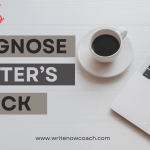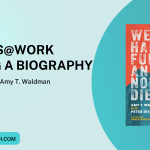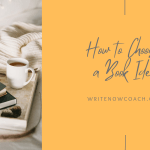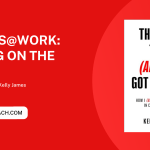Manuscript Makeover: A Checklist for Nonfiction Articles by Rochelle Melander
Writing without revising is the literary equivalent of waltzing gaily out of the house in your underwear. —Patricia Fuller
Last week, my dogs went for their regular grooming session. I was amazed at what they were able to do for Muffin Man in just a few hours. Take a look.
That’s kind of what I do as an editor. I take a messy manuscript and make it magnificent—or at least better than it was.
No one wants to turn in a mediocre manuscript. But when we’re facing multiple deadlines and juggling other responsibilities, we need to figure out how to quickly revise our rough draft so that we can turn in a stellar final draft. But how?
Over the years, I’ve developed checklists to help me edit. I’ve also created lists to help me makeover my own manuscripts. Today, I’m sharing my checklist for a nonfiction article or blog post with you.
Content Checklist
1. Assignment
+Does the content accomplish what I promised or what the editor assigned?
+Review the article with the query letter in mind: did you present the points you promised to explore?
+Review the article from the point of view of the editor: does the article accomplish the goals outlined in the assignment?
2. Lead
+Does the lead hook the reader with juicy language and one of the following: a great idea, good information, or a compelling story?
3. Body
+Do I support my claims with adequate information from interviews with experts, anecdotal evidence, or research.
+Have I sufficiently explained difficult or challenging ideas?
+Have I left out any key information or points?
+Have I included any information that doesn’t fit?
+Does any of my content raise issues I do not want the article to address? (E.g., political or social issues)
+Have I adequately identified terms and people who appear in the article?
4. Conclusion
+Does the article end in a way that’s appropriate to the medium?
+Does the conclusion adequately wrap up the piece?
+Does the conclusion offer the reader something helpful to take with them. This will differ depending on the topic and medium but it might include an idea, a challenge, or a new way of thinking about a topic.
+Does the conclusion answer the question, “Why does this [topic] matter?”
5. Organization
+Do the headers help the reader follow the information presented in the article?
+Is the content organized in a way that works for the medium? (E.g., in an online article, most editors want the juiciest information at the top of the article because readers don’t always read through. In a print publication, the requirements may be just the opposite.)
Technical Checklist
1. Does the piece meet the technical requirements of the assignment?
+Is it the right length (word count)?
+Have I provided all of the pieces the editor asked for? In addition to the article, that may include a sidebar, research links, headers, quizzes, author bio, photos or any other additional information required by the assignment.
+Is it in the format the editor asked for? (RTF, MSWord, etc.)
2. Language
+Have I used any jargon? Is that acceptable for this publication, or do I need to change it?
+Did I write enough of the article in active voice to keep the information interesting and lively?
+Is my sentence length appropriate for the piece and the publication?
+If I’m using headers, are they parallel construction?
+Is the point of view consistent?
+Do my pronouns refer to clearly identified subjects?
+Have I checked the article for my frequent mistakes? (Pro Tip: Create a list of the mistakes you tend to make repeatedly.)
3. The Nitty Gritty
+Have I proofread the article for grammatical, spelling, and typographical errors?
Your turn: What else?
What else would you add to my checklist? Add your comment below. When I have everyone’s suggestions, I’ll put together a big ol’ checklist that you can download and use in your own writing.

















Aww, what a pretty puppy 🙂 And such a useful list! Thanks!
Sarah Allen
(From Sarah, With Joy)
Thanks, Sarah! Anything to add?
A handy check list for many writing projects. I can imagine this list can easily be adapted for fiction writers, too, especially where it concerns scenes that do or do not advance the plot as well as extraneous information, subplots that don’t go anywhere, explanations which help the reader know what is going on. I just finished reading a novel where this check list would have helped a great deal.